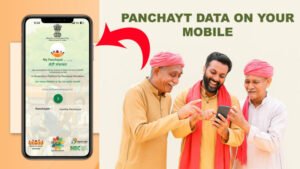In recent years, the Indian government has introduced several official apps to make public services easier and more accessible. These apps cover different areas like health, banking, identity services, transport, and safety. They are developed and maintained by trusted departments and offer reliable information directly to citizens. Most of these apps are available in multiple Indian languages. They help people from villages to cities access services without visiting offices.
One of the most useful apps is Aarogya Setu, developed during the COVID-19 pandemic. It helped people stay safe with live updates, health status checks, and nearby COVID alerts. Though it was made for health tracking, many citizens found it useful for travel safety and health record access. It became an essential tool for millions during tough times. Its impact showed how tech can save lives.
Another important app is UMANG, which acts like a single portal for many government services. From checking EPFO balance, PAN card status, and gas bookings to accessing pension schemes—it brings everything to one place. The interface is clean and supports many languages. It saves time, money, and effort by reducing visits to government offices. UMANG is now widely trusted for digital India services.
DigiLocker is another official app that helps store your important documents like Aadhaar, driving license, mark sheets, and more. These documents are stored in digital format and accepted legally across India. People can also share documents directly with government offices or colleges through the app. It’s safe, fast, and highly useful for students, travelers, and job seekers. No more fear of losing original documents.
mAadhaar app is specially built for managing Aadhaar card details from mobile phones. It allows users to update their details, download their Aadhaar copy, or lock/unlock biometrics for safety. It also supports offline Aadhaar verification via QR code. This makes identity access easy and secure for all citizens. It’s especially useful during verification or KYC processes.
Bharat Interface for Money (BHIM) is the official UPI app from the Government of India for digital payments. It supports direct bank transfers, QR code scanning, and sending money in seconds. Since it’s built by NPCI, it ensures top-level safety and no extra charges. Even in rural areas, BHIM is helping small shops and vendors go digital. It promotes cashless and transparent transactions.
CoWIN app was launched for COVID vaccination booking and certificate download. It played a big role during the vaccine rollout phase. People could schedule their dose, check availability, and receive certificates instantly. Even now, the app stores valid vaccine records needed for travel or work. It brought digital health records into the mainstream. The system was praised worldwide for its smooth function.
mParivahan is a must-have app for anyone who drives in India. It lets users carry a digital copy of their driving license, RC, and insurance papers. It also helps check vehicle details and challans. All the data is linked with official government records. Traffic police also accept these documents during checks. It replaces the need to carry physical papers.
MyGov app allows citizens to directly connect with the government. People can take surveys, participate in discussions, and give suggestions to improve policies. It promotes transparency and builds trust between people and officials. The app also sends alerts about new government schemes and opportunities. It feels like having a voice in governance from your mobile.
Overall, these Indian government apps are not just useful—they are a sign of digital growth and public empowerment. They save time, cut middlemen, and bring services closer to people. From Aadhaar to health, travel to banking, everything is now just one tap away. As India continues its Digital India mission, these apps will become part of every citizen’s daily routine. A smart phone can now access smart governance.
Many people living in rural areas or small towns are also beginning to use these apps regularly. With the rise of smartphones and better internet connections, even first-time users can now access these services easily. The government is making sure these apps are light, simple, and work well even on low-end devices. This helps bridge the gap between technology and the common man. It’s a big step toward equal access for all.
Apps like Kisan Suvidha and PM-KISAN are helping farmers check their scheme benefits and get weather or crop-related updates. Earlier, this information was limited to big cities or through middlemen, but now farmers get it straight from their phones. These apps help them plan their work better and receive timely government support. In times of natural disaster or rainfall changes, they prove especially useful. This is digital empowerment in real life.
For job seekers and youth, the NCS (National Career Service) app helps search for government and private job openings. It also provides career guidance, vocational training information, and interview tips. Many fresh graduates or skill-based workers use this app to build their future. It saves them from agents or fake job listings. Direct updates from official sources bring hope and trust.
Aaykar Setu, launched by the Income Tax Department, makes tax filing and PAN services easier for citizens. It offers clear instructions, calculators, and support for various tax queries. Even people who don’t understand much about income tax can follow the steps. This makes tax services less scary and more approachable. Financial literacy is slowly growing through such tools.
Janaushadhi Sugam is a unique app that helps users find affordable medicines from government-run medical stores. People can check drug availability, price comparison, and nearest store details. It is especially helpful for senior citizens, chronic patients, and people with low income. Quality medicines at low cost are now reachable from mobile. Health is becoming more affordable.
For women’s safety, apps like 112 India are offering emergency response services with just one tap. It connects users to the nearest police, ambulance, or fire station immediately. Location tracking and SMS alerts to family make it very reliable. In risky situations, this app can literally save lives. More awareness about it is needed among women and students.
All these apps are available on the Google Play Store and Apple App Store under the official “Government of India” tag. This makes it easy to find real apps and avoid fake copies. The government also shares links through official websites and campaigns. Users are advised to check reviews and permissions before installing. Safety should always come first, even with government apps.
India is slowly becoming an example of how digital tools can change daily life. From farmers to professionals, students to pensioners, there’s an app for everyone. The convenience is not just about comfort, but about time-saving, money-saving, and transparency. These tools reduce corruption and promote honest systems. It’s the kind of progress every citizen deserves.
In the future, we can expect more advanced features like voice commands, regional AI chat, and offline access. Apps will become even smarter, faster, and more connected with real-time services. Government plans like Digital India will continue pushing these innovations. Citizens just need to stay aware and keep exploring them. Technology is now the bridge between people and public services.
To truly benefit from these apps, people should help each other—teach friends, elders, and even shopkeepers how to use them. When knowledge spreads, power multiplies. One phone, one app, and one step at a time, India is building a strong digital future. These apps are not just tools—they are signs of a smarter, stronger nation. Every download is a step forward.








